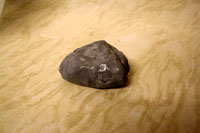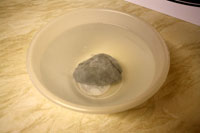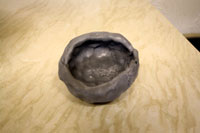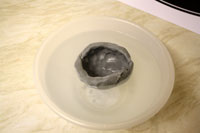Why do boats float?
Experimental Boat Build – Explanation of why boats float
This page is about principles of buoyancy, check out the main project index for the rest.
There is a YouTube video which demonstrates, or scroll down for the pictures and words:
In the previous article, I explained my ideas for building a boat our of expanded polystyrene covered with fiberglass. However, you don’t have to make a boat out of a material that already floats on water – large ships are made from steel, and some have concrete hulls. To demonstrate this, I have made a boat out of some modelling clay.
Normally the clay sinks in water quite quickly:
But when the clay is made into a boat shape it floats:
This is because the boat shape contains air, which is enough buoyancy to offset the mass of the clay and keep it afloat. If you displace the air with something heavier – like filling the boat with water, then it will sink.
Further reading:
http://www.answers.com/topic/how-do-boats-float
http://wiki.answers.com/Q/Why_does_a_boat_float
http://sciencewithme.com/why-does-a-boat-float-but-a-nail-sink/
Therefore you can make a boat out of lead/concrete/steel etc if you wish, as long as you make sure it’s a boat shape with enough air inside. My plans involve using expanded polystyrene, which contains a lot of air itself, so if there is enough volume of polystyrene then it will still float even if the boat is full of water – much like an inflatable boat would, which has large sections of air inside its construction/cavities.









